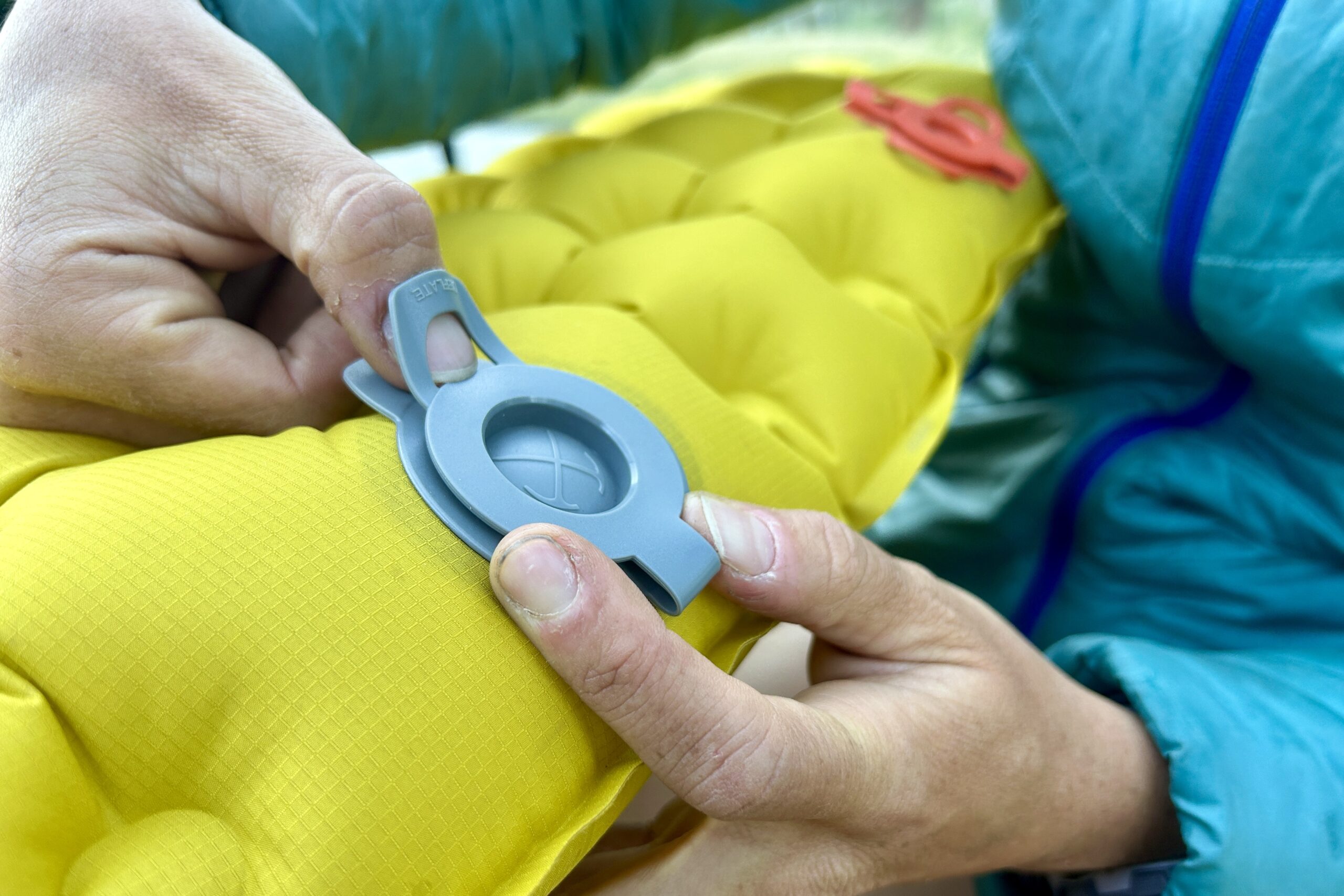
REI Helix Insulated Air Sleeping Pad Review
Bottom Line
If you’re looking for a sleeping pad with great insulation, but without the hefty price tag, the REI Co-op Helix Insulated Air Sleeping Pad delivers. With an R-value of 4.9, it’s one of the warmest options on our backpacking sleeping pad guide, making it a great choice for cold-weather adventures. CleverHiker gear analyst Heather Eldridge used this pad on a week-long, 80-mile backpacking trip through Oregon’s rugged Wallowa Mountains in chilly fall conditions, where she found the pad to be cozy, warm, and fast to pack up.
It’s a comfortable sleeping pad for back and belly sleepers, and the simple valve system, quiet fabric, and accessible price point are great for beginners and shorter backpacking trips. Plus, REI offers the Helix in wide and long options at no extra cost – a rare and welcomed change – making it an excellent value for campers of any shape or size.
However, this pad isn’t without its drawbacks. The quilted design may not suit everyone, as the welded pattern may feel a bit bumpy for some users. Also, side sleepers and tosser turners may bottom out when shifting around at night. The Helix is also one of the heaviest and bulkiest backpacking sleeping pads we tested, making it less ideal for long-distance trips and hard hiking miles.
We also found the Helix’s durability fell a bit short in our testing, with a couple of air leaks developing quicker than other pads. So, like any air pad, you’ll want to handle it with care in rugged environments. If you want a convenient, warm, and affordable pad for the backcountry, the REI Helix hits a nice balance.
Quick Specs
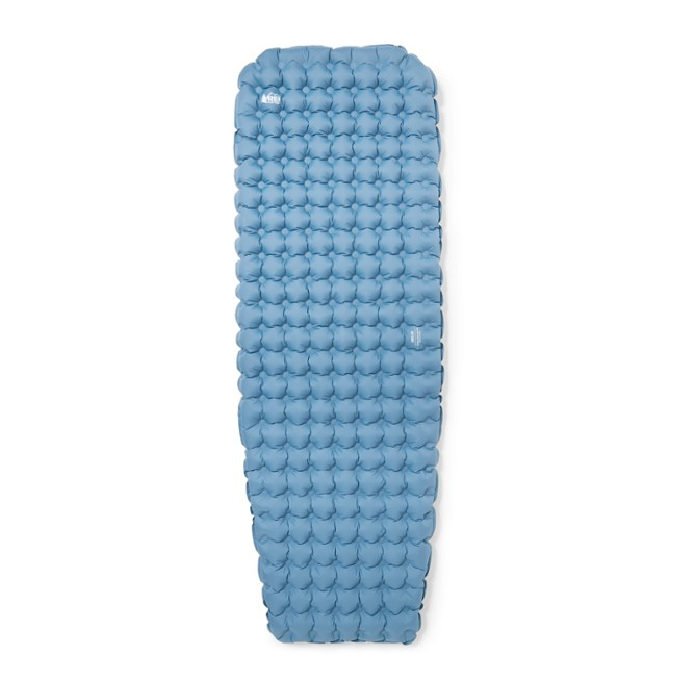
REI Helix Insulated Air
Affordable & Warm 3-Season Sleeping Pad
CleverHiker Rating:
70.8/100
Price:
$169
Weight:
1 lb. 5 oz.
R-Value:
4.9
Thickness:
3 in.
Pros
- Very warm
- Less expensive
- Comfortable for back and belly sleepers
- Quick inflation/deflation
- No extra cost for wide & long options
- Quiet material
- Inclusive sizing
Cons
- Side sleepers can bottom out
- Heavier/bulkier than some
- Pump sack not dual use
- Quilted pattern isn’t for everyone
- Not as durable
Comfort
The REI Helix Insulated Air sleeping pad checks every box for back and stomach sleepers. At three inches thick, it offers plenty of cushioning to keep you off the cold, bumpy ground, and the quilted design cradles the body well and distributes weight evenly. Its valve allows you to adjust the firmness to your liking, and the 30D nylon fabric is quiet, so you won’t deal with the annoying rustling sounds of other pads when you roll over during the night.
This pad is a great option when it comes to staying warm on chilly shoulder season hikes. Paired with a warm sleeping bag, you’ll stay comfy down to around 20°F with the Helix, thanks to its high R-value of 4.9. The Helix is wide at the shoulders, so it’s a great fit for different body types and sleeping styles. We also like that REI offers wide and long versions at no extra cost, which is not the norm. This comfort level often comes at a premium price, but the Helix is very affordable for adventuring in chilly conditions.
However, comfort isn’t universal. Side sleepers and folks who move a lot during the night may bottom out on this sleeping pad due to the steep dips in the quilted pattern. The pad is wide at the shoulders, but it tapers at the feet like a traditional mummy design, which might not work for people who like to spread out. Its dimpled design absorbs uneven and rocky ground well, but its pillowy cells may feel too pronounced for sensitive campers.
These are fairly small hang-ups – this pad is reliably comfy for most people in most conditions.
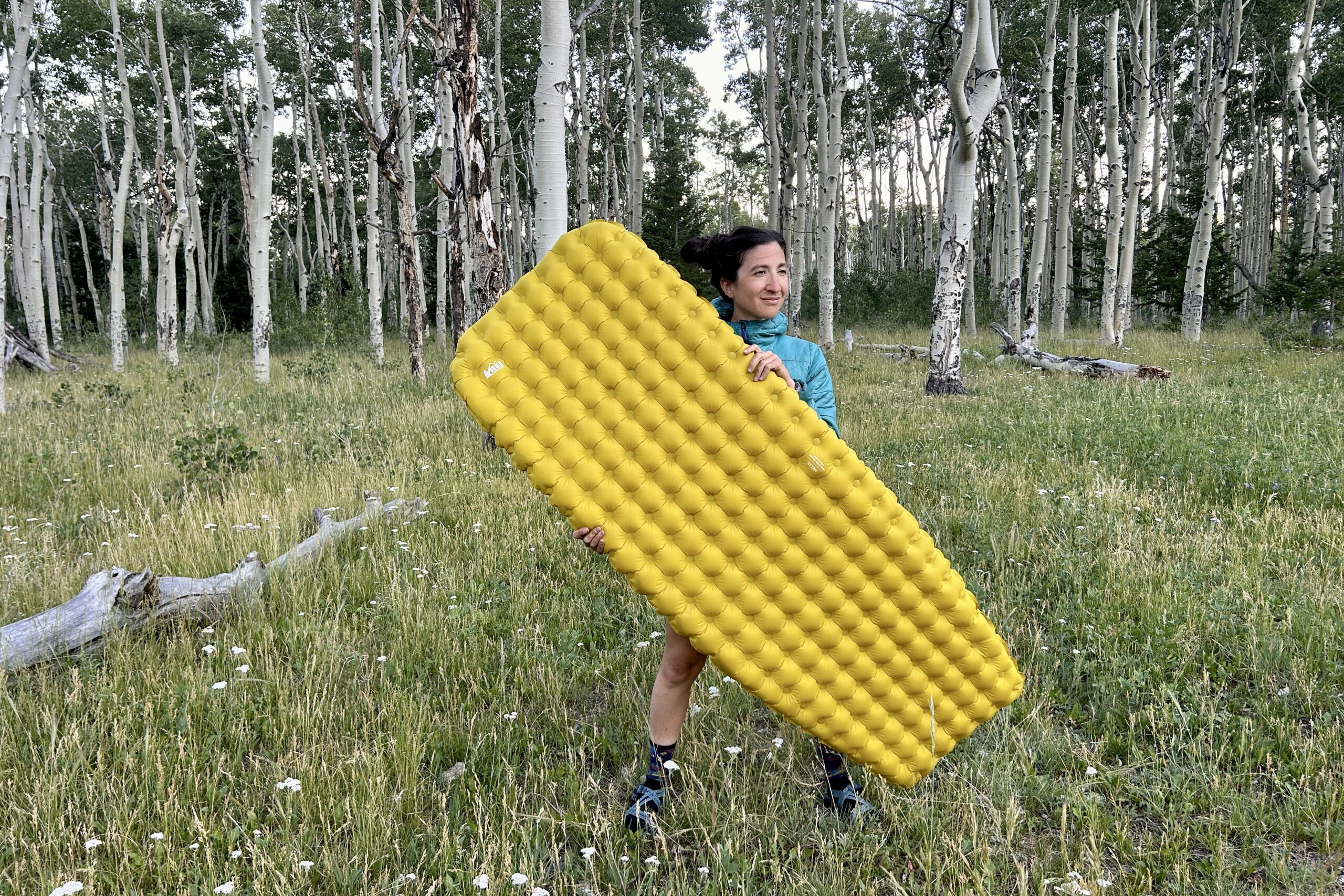
Weight & Packability
For shorter treks, cold-weather adventures, and lower-elevation hikes where weight isn’t a priority, the REI Helix is a solid choice. This pad is quite a bit heavier than similar sleeping pad models, tipping the scales at 21 ounces. But those extra ounces are worth it when overnight temps drop, and staying warm is crucial to a good trip.
This Helix packs up easily thanks to the combination of dedicated inflation and deflation valves and flexible nylon fabric that folds and rolls easily. We like that the stuff sack is roomy, so you won’t be wrestling to get the pad back inside. Its packed size is 5 x 10 inches, so it’s larger than most backpacking sleeping pads, but it’s not too bad.
This pad is not among our top choices for long-distance backpacking or hiking hard miles. Weight is a critical consideration for backcountry trips, and that’s one of the key weaknesses of the Helix. It was one of the heaviest backpacking sleeping pads we tested, and the difference is noticeable compared to a top-of-the-line sleeping pad.
There are some pads in this price range that weigh significantly less, but not many that can match the warmth of the Helix. So, if your main objectives revolve around warmth, comfort, and saving money, the Helix could still be a good fit for your backpacking style. If, like us, keeping your pack weight down tends to be critical, you may want to consider other options.
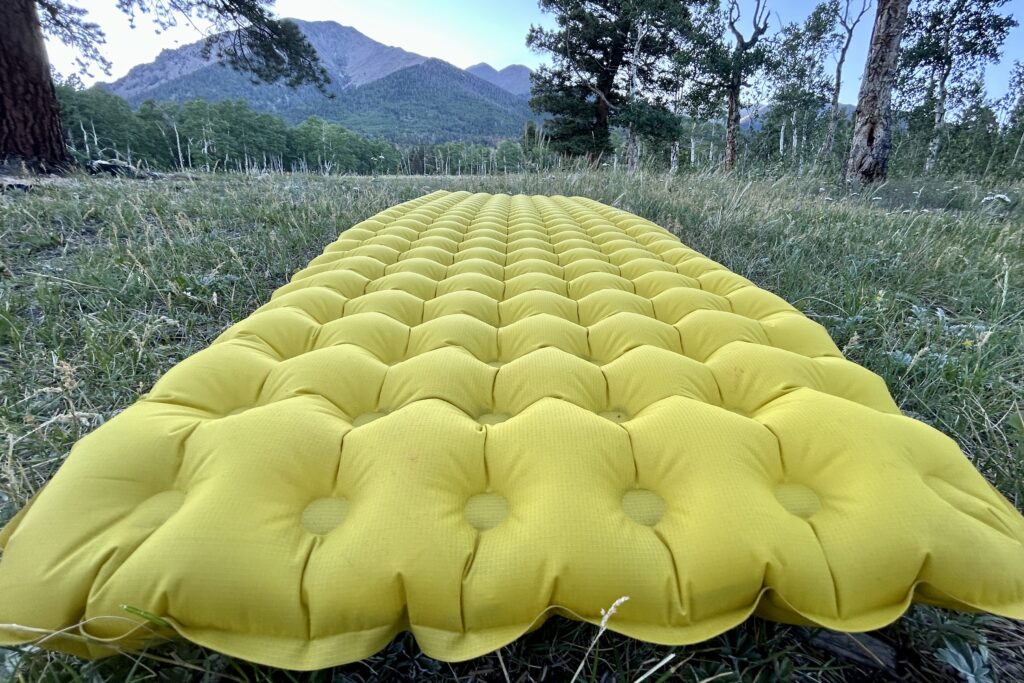
Warmth
The REI Helix Insulated Air offers a solid 4.9 R-value to stay warm in temperatures as low as 20°F, making it a great bang for your buck for chilly fall and spring conditions. Its 3-inch thickness puts plenty of space between you and the cold ground, and two-layer reflective insulation helps trap heat throughout the night. Paired with a good sleeping bag or quilt, it’s a smart choice for shoulder season and mild winter trips.
We did notice a few shortcomings with this pad during our testing. For side sleepers, the quilted design and deep welds can cause uneven warmth distribution and bottoming out. That can lead to cold spots at the shoulders, hips, and knees. The pad also tends to bottom out if under-inflated, which can reduce its insulating ability for cold sleepers.
Also, our testers find that this pad falls short in more extreme temperatures below 20°F. So, you may want to add a closed-foam cell pad for extra insulation on snowy trips or consider a more premium pad designed for extreme winter use.
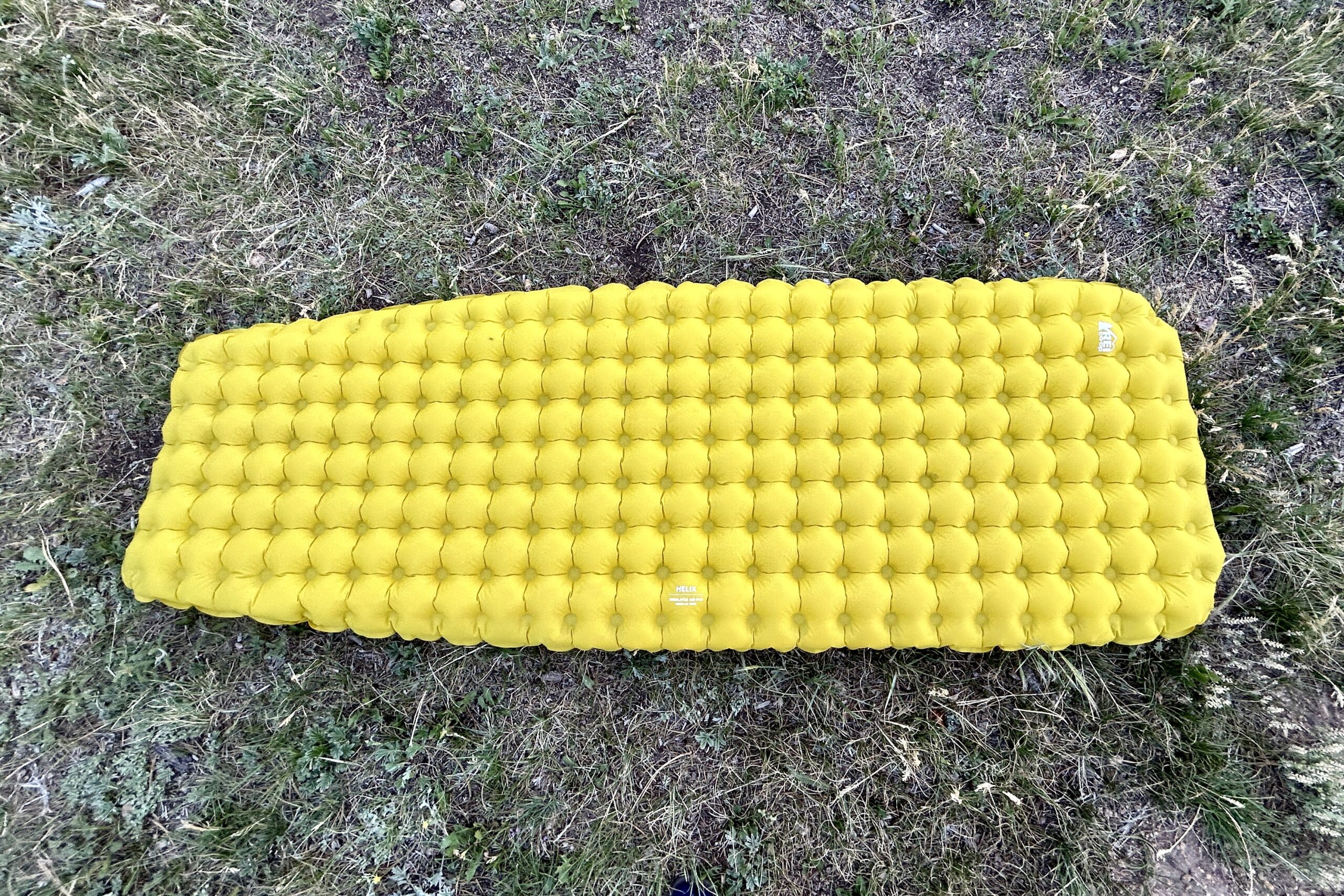
Ease of Setup
The REI Helix Insulated Air is efficient to set up, making it a good choice for cold conditions when you’ll want to set up gear quickly. A separate, dedicated inflation valve snaps tightly onto the pump sack nozzle for a streamlined inflation that takes minimal effort. The included pump sack is durable, large, and easily captures air – it takes only 5 to 7 fills to inflate the pad.
The 30D ripstop nylon compresses and creases with no issue, so you won’t be battling the material when putting the pad away in the morning or pulling it out in the evening. While many pads are rectangular, this pad offers angles at the shoulders but tapers at the bottom, so it’s easy to set up in any tent style. The dump valve deflates the Helix in seconds for a fast breakdown, and while it’s not the most nuanced design, you can still let air out in bursts to dial in the perfect firmness.
While there’s a lot to love about this model, it isn’t without faults. Often, the valve seams on sleeping pads are the most vulnerable area and the most likely to fail. While we like the two separate nozzles for convenience, double-valve designs increase opportunities for seam failures. It’s also bulkier than other backpacking pads, meaning it can take longer to stow away during teardown and may be harder to fit into a packed backpack.
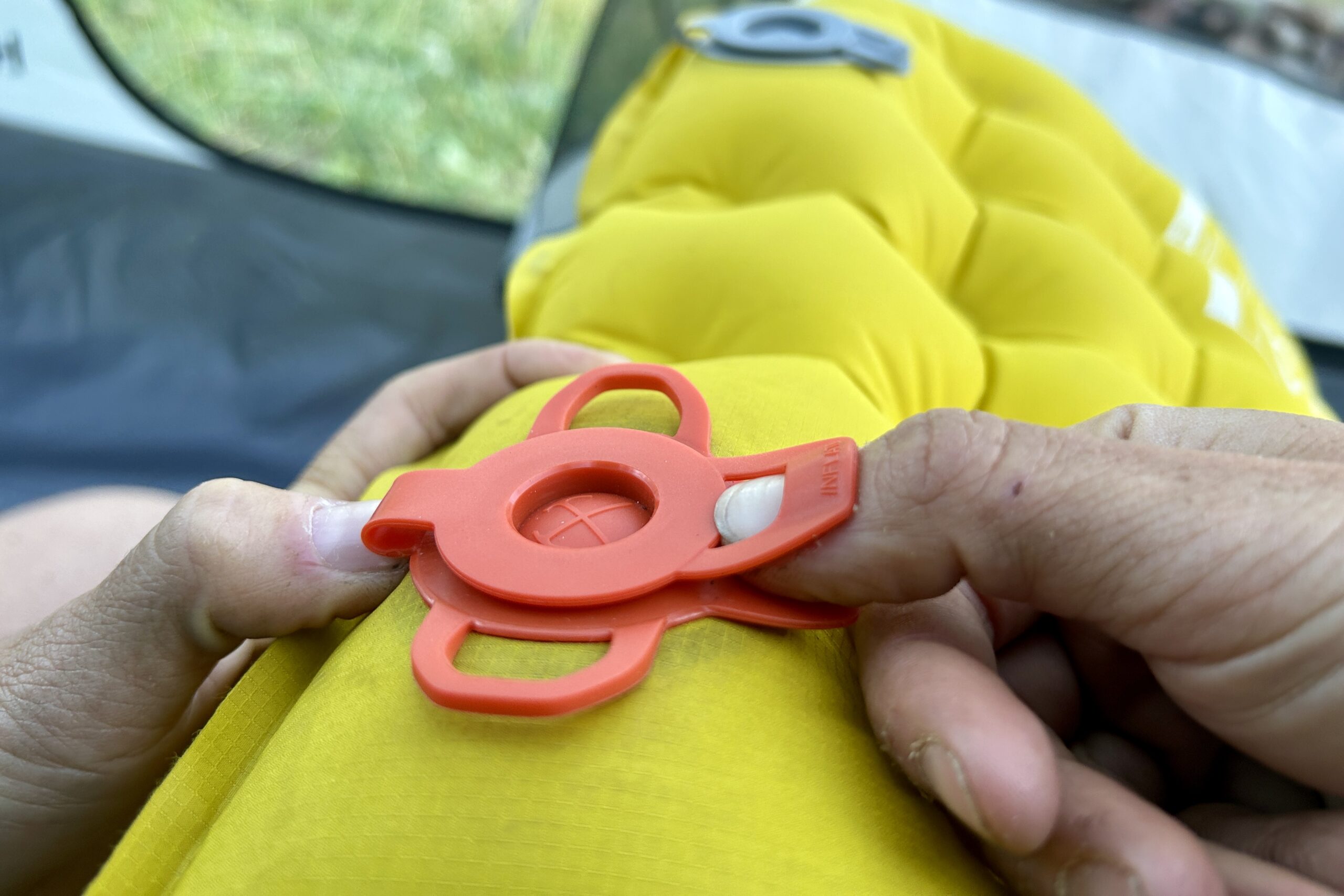
Durability
The REI Helix Insulated Air is built with a 30-denier nylon fabric that provides an okay balance between weight and durability. While the 30D nylon is relatively lightweight, it holds up well for shorter trips on soft to moderate terrain. The grid pattern and seams are welded for extra strength, which helps the pad resist slow leaks over time. Its quilted design distributes pressure evenly across the pad to reduce wear in concentrated areas.
The included field repair kit has adhesive patches for fixing minor backcountry issues. For casual backpackers who aren’t hard on their gear, the Helix offers solid durability for its price point and should last multiple seasons with proper care.
Still, this pad isn’t as rugged as others in its class. In one of our field tests, the pad developed a leak along a side seam after just a few nights of use, requiring an in-field repair.
The two valves separated across the pad mean a double chance of failure around the seam instead of one unit that will generally last longer. Your sleep style might also affect the durability of this pad. Side or restless sleepers may find themselves bottoming out, which can put more stress on the seams and lead to quicker wear.
While the Helix’s durability is not a dealbreaker, you’ll need to pay more attention to where you inflate and deflate it. Avoid brambles, sharp rocks, and gear that could puncture its surface. Even with those caveats, we’ve used this pad for multiple seasons without major issues; you’ll just want to treat it carefully.
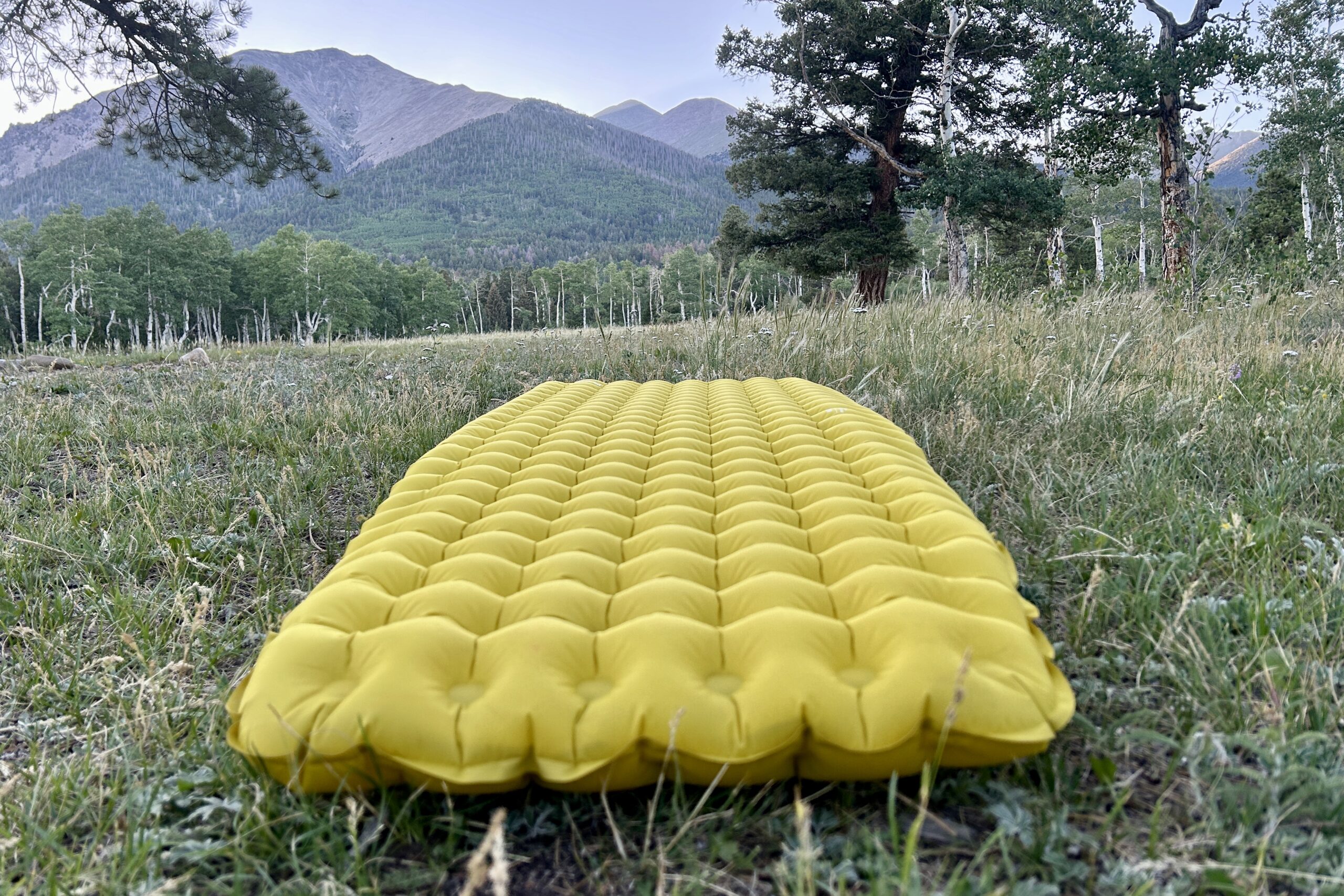
Should you Buy the REI Helix Insulated Air?
The REI Helix Insulated Air is a good choice for budget-conscious backpackers looking for high insulation in their sleeping pad. Its higher-than-average R-value provides solid warmth in temperatures as low as 20°F. It’s good for cold sleepers, chilly shoulder-season treks, or mild winter adventures.
If you want reliable comfort, especially for those who sleep on their stomach or backs, the Helix’s 3-inch thickness and quiet fabric will fit the bill. With larger sizes offered at no extra cost, this pad works for a wide range of users at affordable prices. The simple valves make for fast inflation and deflation, and the tapered design means this pad fits well in any tent. When it comes to high insulation at an outstanding price, the Helix is among the best.
However, we found some key downsides in testing this pad. The biggest among them is weight. The Helix Air is a pretty heavy pad for backpacking adventures, and we generally like to keep our pack weight to a minimum, so this was a critical downside for us. Additionally, our side sleeping pad testers reported that this wasn’t their favorite design because they tended to bottom out when shifting around, especially when the pad’s firmness was inflated lower.
We also found that the Helix’s fabric is less durable than some of its competitors, requiring more careful handling to avoid punctures. The pump sack’s single-purpose design is also not ideal.
If you’re a budget-conscious adventurer going on shorter trips where weight isn’t a top concern, the Helix is a very sensible and comfortable choice.
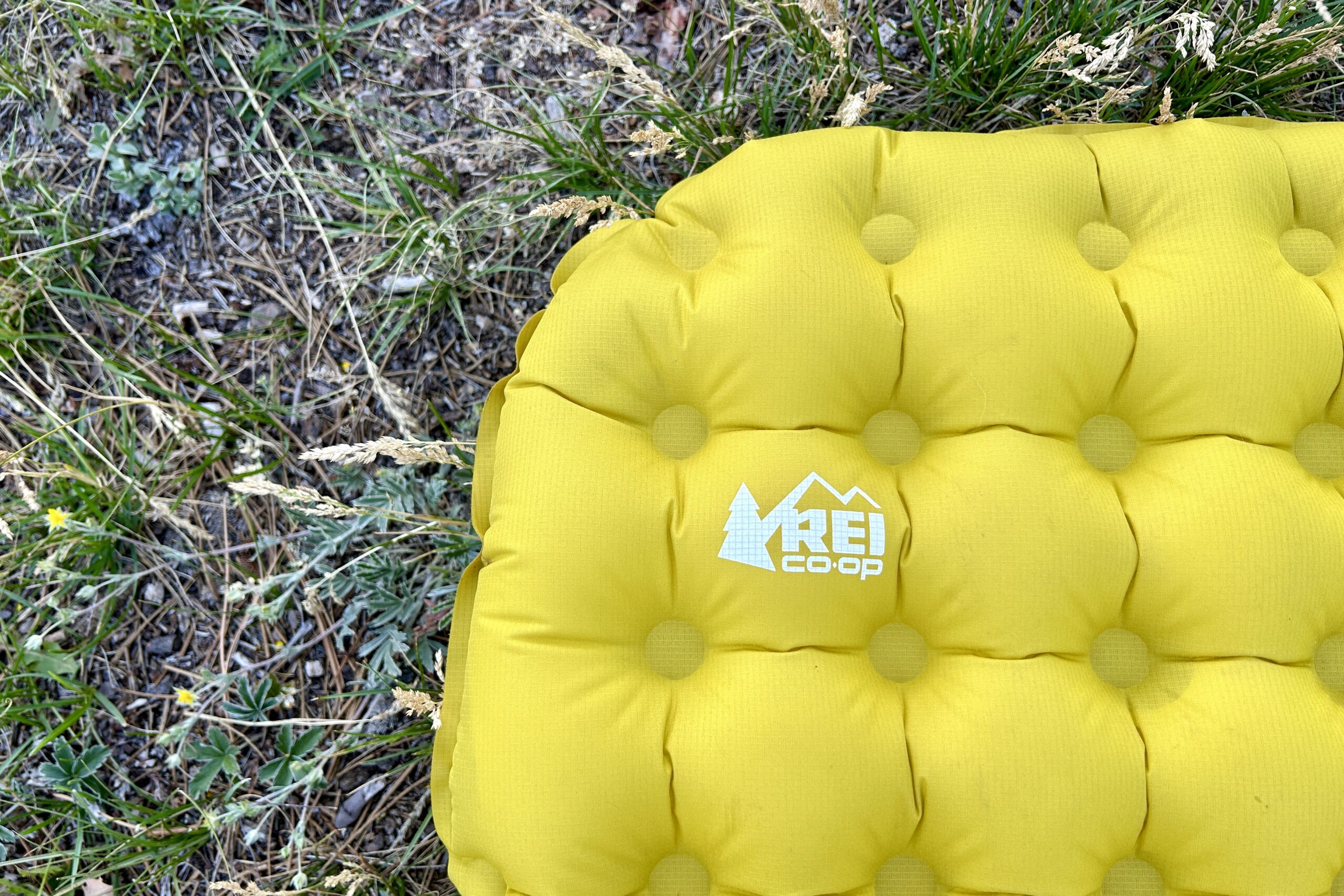
What Other Sleeping Pads Should You Consider?
Check out our list of the Best Backpacking Sleeping Pads for all our top recommendations.
NEMO Tensor All-Season Review: If you’re willing to pay a bit more for a substantial bump up in quality, we recommend checking out the NEMO Tensor All-Season. The Tensor is warmer, weighs less, earned higher comfort scores in our testing, and is still very durable and easy to use. It’s one of our top recommendations for backpacking sleeping pads.
Big Agnes Rapide SL Insulated Review: Like the Helix, the Rapide SL has a high R-value, so it’s a great option for cold-weather trips. The Rapide is also less expensive, lighter, packs smaller, and is thicker for more comfort and durability. The Rapide is one of our top budget choices for air sleeping pads that are comfortable and built to last.
Sea to Summit Ultralight Insulated Review: The Sea to Summit Ultralight Insulated shares the same price point as the REI Helix and is just as easy to inflate and pack. However, the Ultralight Insulated is notably lighter, packs down smaller, and offers better durability. That said, its insulation value is much lower, and it shares the same bottoming-out possibility when tossing and turning at night.
